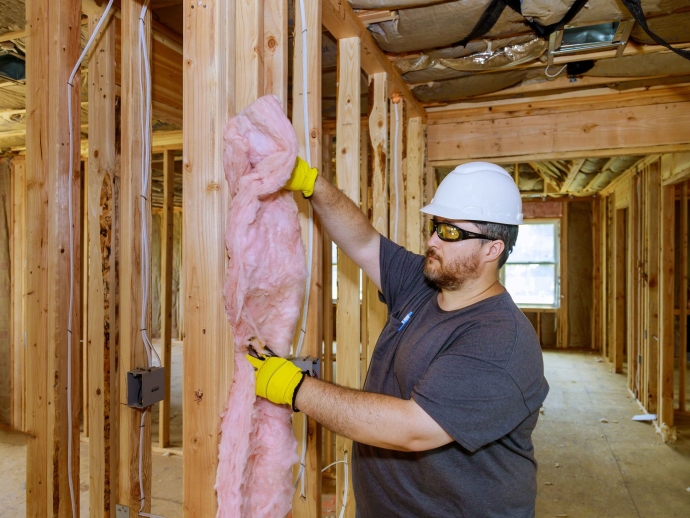Eco-Friendly Insulation Solutions: Is Cellulose the Best Choice for Sustainable Living in DFW?

As homeowners in the Dallas-Fort Worth (DFW) area become increasingly aware of the importance of sustainability, the choice of insulation materials has gained significant attention. Among the various options available, cellulose insulation stands out as an eco-friendly solution that not only benefits the environment but also enhances energy efficiency and comfort in homes. This article explores the advantages of cellulose insulation and why it may be the best choice for sustainable living in DFW.
Understanding Cellulose Insulation
Cellulose insulation is primarily made from recycled paper products, including newspapers and cardboard, which are treated with fire retardants to enhance safety. It is typically installed as loose-fill material, making it suitable for both new construction and retrofitting existing homes. With an R-value ranging from R-3.1 to R-3.8 per inch, cellulose provides effective thermal resistance, helping to maintain comfortable indoor temperatures year-round.
Environmental Benefits
1. High Recycled Content
One of the most significant advantages of cellulose insulation is its high recycled content. Made from up to 85% recycled materials, cellulose insulation significantly reduces waste that would otherwise end up in landfills. This characteristic aligns with sustainable building practices and contributes to a circular economy, where materials are reused rather than discarded.
2. Lower Energy Consumption in Production
The manufacturing process for cellulose insulation requires less energy compared to other insulation materials like fiberglass or spray foam. This lower energy requirement translates into a reduced carbon footprint, making cellulose a more environmentally friendly option.
3. Biodegradable Properties
At the end of its life cycle, cellulose insulation is biodegradable, meaning it can decompose naturally without harming the environment. This contrasts sharply with synthetic insulation materials that can take centuries to break down, contributing to long-term environmental pollution.
Energy Efficiency
4. Superior Thermal Performance
Cellulose insulation offers excellent thermal performance due to its dense packing and ability to fill gaps and voids effectively. This characteristic minimizes air leakage and heat transfer, leading to significant energy savings on heating and cooling costs. In DFW's climate, where temperatures can soar in summer and drop in winter, effective insulation is critical for maintaining indoor comfort.
5. Reduced HVAC System Load
By improving thermal resistance and minimizing air leakage, cellulose insulation reduces the workload on heating, ventilation, and air conditioning (HVAC) systems. This reduction not only leads to lower energy bills but also extends the lifespan of HVAC equipment by preventing overuse.
Health and Safety Considerations
6. Non-Toxic Materials
Cellulose insulation is made from natural materials and does not contain harmful chemicals commonly found in some synthetic insulation products. This non-toxic nature contributes to healthier indoor air quality, reducing potential health risks associated with exposure to volatile organic compounds (VOCs).
7. Fire Safety Features
While cellulose is made from paper products, it is treated with fire retardants that give it a Class I fire safety rating. This treatment helps prevent combustion and enhances safety in residential applications.
Soundproofing Benefits
In addition to thermal performance, cellulose insulation provides excellent sound-dampening properties. Its dense structure helps absorb sound waves, making it an ideal choice for homeowners looking to reduce noise transmission between rooms or from outside sources. In urban areas like DFW, where noise pollution can be a concern, this feature adds significant value.
Cost Considerations
8. Competitive Pricing
Cellulose insulation is generally more affordable than spray foam insulation while providing comparable thermal performance. The installation process is also less intrusive than some other options since it can be blown into existing walls without major renovations.
9. Long-Term Savings
Although the initial investment may be slightly higher than fiberglass insulation, the long-term energy savings associated with cellulose make it a cost-effective choice over time. Homeowners can expect reduced utility bills due to improved energy efficiency.
Conclusion: Is Cellulose Insulation Right for Your DFW Home?
In conclusion, cellulose insulation presents numerous benefits for homeowners seeking eco-friendly solutions in the DFW area. Its high recycled content, lower energy consumption during production, biodegradability, superior thermal performance, health benefits, soundproofing capabilities, and competitive pricing make it an attractive option for sustainable living.
As DFW continues to grow and evolve environmentally conscious practices become more critical than ever, choosing cellulose insulation can significantly contribute to a greener future while enhancing comfort and reducing energy costs in your home.
When considering insulation options for your home renovation or new construction project, consulting with a professional contractor experienced in eco-friendly solutions can help you determine if cellulose is the right fit for your specific needs.
By investing in sustainable materials like cellulose insulation, you are not only improving your living environment but also playing an essential role in protecting our planet for future generations.

